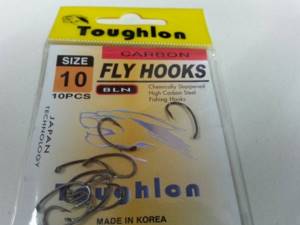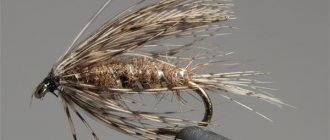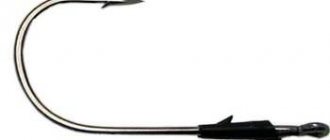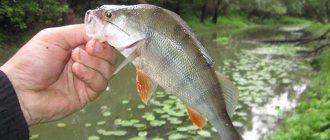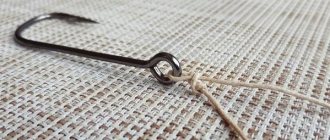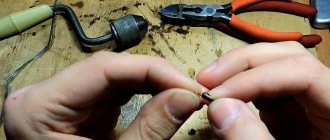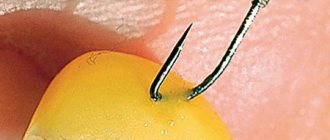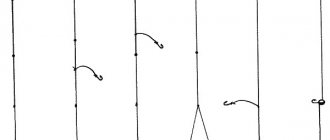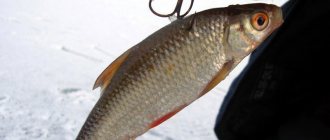Buy quality products at affordable prices in the best fishing online stores
. Give gifts to yourself and your loved ones!
we are in social networks
— subscribe to us on Facebook, Youtube, VKontakte and Instagram. Stay up to date with the latest site news.
A fishing hook is the most important link in any fishing equipment. The success of fishing will largely depend on its properties. This article presents ratings of various types of hooks: from standard to offset and tees.
The best offset hooks
Offset machines are most often used when installing silicone and foam rubber baits. With their help, it is possible to obtain snag-free fishing rods that are comfortable for fishing in snagged areas and in ponds overgrown with grass.
The offset rating looks like this:
- Decoy Worm.
The Japanese company produces very high quality offset hooks. Of particular note is the Worm series. Models numbered 11, 13, 15 and 17 are distinguished by very good sharpness, which does not go away after several fishing trips. The hooks have a wide eye. They are perfect for twisters, vibrotails, slugs and foam fish.
- Hitfish.
These hooks are great for jigging. There are offset machines made of thin and thick wire. It is worth noting models with a large Big Hole ear. The bait attached to such a hook moves more freely. The quality of workmanship and affordable price of these offset machines make them desirable for many spinners.
- Owner.
Ovner fishing hooks do not need unnecessary advertising. It produces very good offset printers. Particularly worth highlighting are models 5140 and 5109. The hooks are made of thick wire. They are always spicy and great for Cheburashkas.
- GAMAKATSU EWG Worm.
Gamakatsu fishing hooks are held very well in soft silicone baits. They are suitable for Texas rigs and do not lose their sharpness after many fishing trips.
- Mustad 37145BLN.
Offsetters from a Norwegian company are excellent for fishing on voluminous silicones: frogs, crustaceans and large twisters. The hooks are made of strong wire that does not bend under heavy loads.
Goatee
Most hooks have a notch below the sting, which is called a barb. It is done in order to keep the bait on the hook and reduce the number of fish landings. There are hooks, mostly tees, in which the barb is located on the outside of the sting. Such hooks have proven themselves to be very good. But there are also hooks without a barb at all. They are used mainly for high-speed fishing for small fish. Why small? Yes, because huge fish are not caught quickly. For example, hooks without a barb are very good for high-speed fishing of bleak with maggots.
The best hooks with a ring
- Owner 50922
. The rating of crochet with rings is headed by hooks from Ovner. This model has long proven itself to be the best. These hooks are made of thin wire and are designed for attaching maggots and bloodworms. They are well suited for feeder rigs. When fishing for large bream or crucian carp, you don’t have to worry about the strength of the hook. It will not unbend or break. Well, the usual sharpness has long been the hallmark of all Ovner hooks.
- Gamakatsu LS-5314N
. These hooks are excellent for fishing carp and crucian carp using vegetable baits. They have a curved eye, are made of very strong steel wire and easily pierce even hard boiled peas and wheat. The serif turns out excellent.
- Drennan specimen sweetcorn.
These hooks are made of durable wire. They have a large curve and are suitable for fishing with corn, maggots and medium worms. The hooks can be called universal, as they are suitable for fishing crucian carp, carp, and bream.
- Saikyo.
The products of this Japanese manufacturer can be called one of the best in terms of price and quality. More and more anglers prefer Saikyo hooks. They are made of very good wire, have a perfectly correct sharpening and are suitable for feeder and float fishing.
- MUSTAD CLASSIC SPORT 92247BR.
These hooks are designed for bottom fishing with worms and bulky vegetable baits. They have a long forend with notches. Tempered wire gives strength to the product. Ideal sharpness ensures successful serifs.
Hook numbering by fish species
It should be noted that at the moment there are two main numberings for hook sizes - Russian (Soviet) and international (Redditch scale). According to our domestic classification, the number is the width of the hook, expressed in millimeters, determined by the distance between the tip and the fore-end.
The international classification is guided by other definitions related to hooks for fly fishing using artificial lures - flies. The basic definition is that the length of the shank of a standard hook is strictly regulated and is twice its width and, accordingly, the standard length of the hook is regulated. But, depending on the size of the fly being tied, the hooks can have different lengths. The Redditch scale defines the standards, and manufacturers indicate on the packaging what the length of this particular hook is, correlated with the standard, that is, how much longer or shorter the hook length is than the standard one and what scale number it corresponds to.
Below are the recommended hook numbers for various fishing trips in the domestic numbering, since it is more commonly used.
When catching minnows, bleak, char, roach, ruffe, dace, small perch or crucian carp, use hooks No. 2.5 - 4.
For catching rudd, silver bream, roach, crucian carp, podust, perch, roach, and white bream, use hooks No. 4 - 6.
For larger and stronger perches, carp, tench, bream, ide, burbot and medium-sized carp, hooks No. 6 - 10 are suitable, and for large carp, hooks No. 10 - 14.
Pike are caught with single hooks No. 8 - 12, double hooks No. 7 - 10, triple hooks No. 7 - 8.
To catch pike perch, use hooks No. 8 - 12.
When catching asp with a spinning rod, the bait is equipped with a tee no. 7 - 8.
Catfish are caught on hooks No. 18 - 20 (for a frog), and with live bait, meat - the hook should be even larger.
When fishing with bloodworms, steamed grains of oats, wheat, peas, barley, balls of bread and dough, use hooks No. 2.5 - 4,
Hooks No. 5 - 7 are suitable for caddis flies, pieces of worms, maggots, dragonflies, mayflies, porridge, and dough.
Hooks with a long shank with the same attachments can be used when fishing in fast currents. Hooks No. 8 - 12 with a long shank are suitable for attaching large worms, beetles, crayfish, and live bait.
The best hooks for jigs
The highest quality requirements are placed on hooks for jigs. Not only the sharpness and strength of the wire is important, but also the nature of the bend, the parameters of the beard and eye. It is quite difficult to create an objective rating for such hooks. Under some fishing conditions, some models will be the best fishing hooks, but in other situations they are not so effective. The type of jig is of great importance. The hook and the body of the bait must be combined in such a way that the correct action is obtained.
The rating consists of the following positions:
- Gamakatsu 1050N.
Gamakatsu fishing hooks are often chemically sharpened. This series is no exception. The presented models have a long fore-end and are distinguished by great strength and sharpness. It is easy to attach even the smallest bloodworms to the hook.
- Owner 50354
. This model has long enjoyed well-deserved popularity among jig makers. The hooks are made of very thin wire and are suitable for the smallest jigs. Practice has shown that they are equally well suited for reelless and standard jigs. In many respects, these are one of the best hooks for jig fishing. - Maver Katana 1040.
This series is designed for delicate fishing. The hooks are made from very thin carbon steel wire. The tip remains perfectly sharp after many fishing trips.
Storing fishing hooks and protecting them from rust.
If you use simple fishing hooks without anti-corrosion coating, you should take care of their safety between fishing trips. Your set of hooks will not rust if you put a little starch in the jar where they are stored. There are other ways to protect hooks from rust.
Take a piece of foam rubber and soak it with machine oil. Insert storage hooks into the resulting greasy sponge. But if rust does appear on the hooks, you can get rid of it. The rust will disappear if you stick the hook into the soap and hold it there for a while.
The best hooks for ice fishing
For winter fishing, the smallest and thinnest hooks are selected. If we want to interest inactive fish with a bloodworm, then it should be dressed so that the hook is not visible. Therefore, when choosing hooks for winter fishing, the emphasis is on models designed specifically for bloodworms. Moreover, small bloodworms are often used. You can easily put it on only with a thin hook.
Buying the right hooks for ice fishing is not that difficult. It is enough to pay attention to models with the inscription “bloodworm” (crank). Often these hooks are red. The rating of hooks for winter fishing looks like this:
- Owner Sode 50282, 50286.
These are very thin hooks, which are made in two versions: bronze and red. They are of the “Crystal” type and are very well suited for baiting bloodworms and maggots. These baits remain mobile for a long time and hide the hook from the fish very well. The optimal sizes of hooks in this series for winter fishing are considered to be No. 16-22. These fishing hooks are very common in online stores.
- Gamakatsu G-Bait Bloodworm.
A series of hooks that are specially designed for bloodworms.
Miniature #20 models are ideal for the smallest red grubs. They have such a sharp sting that it penetrates the body without leaving any rips. The nozzle is not damaged and remains alive for a very long time. Gamakatsu fishing hooks
for bloodworms are successfully used in winter jigs.
- "Owner" 50363 Chika.
These hooks have a classic shape and are also designed for fishing with bloodworms, as evidenced by the color of their wire. They are great for catching roach and bream from the hole. The hooks hold not only bloodworms well, but also maggots and udders. Be sure to buy Chika series fish hooks for winter and feeder fishing, and you will not regret it.
Double for zander
A double hook for catching pike perch will be the golden mean, which is located between a neat single hook and a so-so harsh tee, which practically does not forgive the predator’s mistakes. A double hook does not cause any particular danger to the fish, like a tee, and, at the same time, a double hook is more reliable than a single hook in terms of the quality of hooking fish. Single bites or fish leaving a double hook happen less frequently than with a single hook, since the double hook has a higher chance of successfully hooking the fish when biting.
For catching pike perch, choose double hooks Nos. 1-4, as well as single hooks. It’s also better to choose doubles with a long fore-end - it’s easier to put on live bait, and it will be easier to pull the double out of the pike perch’s mouth later.
There are doubles for catching pike perch, in which one hook is smaller than the other. The smaller hook is used to attach live bait, and due to the fact that this hook is smaller and thinner, live bait receives less injury when hooked and remains active longer.
Best spatula hooks
Spade hooks are increasingly being used by anglers. And this is absolutely true. They are in no way inferior to models with an ear. The main thing is to learn how to tie them to a fishing line. This rating presents the best fishing hooks with a spatula. They are used in float, bottom, feeder and winter rigs.
- "Gamakatsu" LS-1310 N.
This model has a nickel plated finish. The hooks are very strong and reliable. The sharpness is impeccable. They have long been in the arsenal of floaters and feeders. The hooks have a round bend and a small barb that easily penetrates the soft tissues of the fish’s mouth. Thin wire allows you to attach small bloodworms and small maggots. Tempo fishing with hooks works out just fine. All attachments are very easy to thread and always look appetizing. The clearance rate is very low. This series is definitely one of the best from Gamakatsu. We strongly recommend purchasing these fishing hooks in one of the online stores.
- Preston Competition match hooks PR 322.
This model is unique in that it is suitable for winter and summer fishing with different gear. The hooks have a long shank and a classic shape with a round bend. The spatula has the correct shape. The knots are perfectly strong. The hooks hold worms, bloodworms, maggots and plant baits well. Chemical sharpening of the tip ensures ideal sharpness for a long time. These fishing hooks are in no way inferior to the popular Ovner models.
- "Owner" 53100, 53101 JUST-KISU.
These hooks have a round bend and a short point. They are great for tempo fishing with a fly rod and for fishing with a feeder. This series includes models with bronze and red paint. 2-3 maggot larvae and up to 5 bloodworms are placed on the forend.
Ring or spatula?
At first glance it seems that this is a matter of habit. But not everything is so primitive. The advantage of the ring is that the line is always correctly positioned on the hook. That's right - this means that the line exits the knot on the side of the bend. Hooks with a ring are necessary when using thick monofilament lines, braided cords and metal leads. The presence of a ring indicates that you are holding in your hands a hook adapted for catching huge and strong fish.
But spatula hooks are invariably more ticklish. Their upper limit of use is limited to soft monofilament line with a diameter of up to 0.16 mm. Consequently, when catching peace-loving fish on thin monofilament lines, it is invariably preferable to use hooks with a spatula.
If you nevertheless decide to place a hook with a ring, then you should remember that the diameter of the leash line must certainly be a quarter larger than the width of the gap that remains when the ring is formed. Otherwise, the fishing line will be cut off on the sharp edges of the wire.
The best doubles
The ranking of doubles presents positions from well-known companies. The hooks are suitable for wobblers, silicone and foam rubber baits.
- OWNER TW-01 BC.
This double is made from one wire. It is great for surface baits: wobblers, walkers and silicones. Despite its light weight for its size, the hook is highly durable. It does not overload light baits and does not prevent them from demonstrating the correct action. The presented double has a long fore-end and a round bend. A medium-sized beard detects fish very well, but does not injure it too much. The hooks are coated with an anti-corrosion compound, which allows them to be used in both fresh and sea water.
- Gamakatsu Double 21NS.
A very durable and reliable double that will not let you down when fishing for large fish. It has a perfect chemical sharpening and simply sticks to the fingers and palm. Very good for live bait fishing. Thanks to the sharp beard and sting, the bait fish is easily pierced. After hooking the fish, it is always well detected. In terms of efficiency, this model will give odds to any single hook.
- OWNER SD-36TN.
This series of doubles has long been considered one of the best double fishing hooks available.
They are great for different types of jig rigs. Many fishermen are not averse to buying these fishing hooks
. They work well with foam fish, mandulas and all types of silicone.
Fishing Hook Color
Fishing hooks may also differ in color. Most often, in order to protect hooks from the negative effects of the environment, a nickel galvanic coating is used, which can be dark or light. The most protected and therefore the most expensive are hooks coated with technical gold. Sometimes tinning or chrome plating procedures are used.
In other words, the color of the hook depends on the type of coating. Only through special varnishing are some hooks given a red or other color, but this varnish only lasts 1-2 fishing trips. In addition, varnished products are usually characterized by low strength.
Best tees
Treble hooks are widely used in spin fishing. It’s hard to imagine a wobbler, spinner or spinner, spinnerbait and castmaster without tees. This rating presents tees that are best suited for fishing with spinning baits and for fishing with live bait.
- OWNER ST-21.
A tee from Ovner, which is made of not very thick, but tough and durable wire. It has a chemical sharpening and a sharp beard of a special shape. It easily penetrates even the hard tissues of fish without injuring it. Tees go well with spinners, wobblers, silicone baits and other types of baits.
- Gamakatsu Treble 18NS SS ME.
This tee has a short fore-end and is always close to the bait during posting. This position guarantees good detection. The sharp sting and beard allow you to count on productive fishing with such tees.
- 2X OWNER (5641-xxx) black chrome.
Very strong and reliable tee. It can withstand heavy loads when catching the largest pike and pike perch. Made of hardened wire, has a round bend and a sharp tip. Suitable for fishing in fresh and sea water.
Modern fishing hooks and their secrets
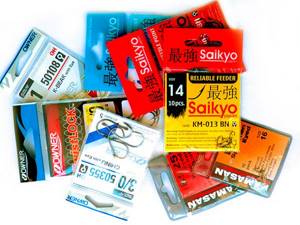
No matter how you twist the reel handle, how you don’t jerk the rod, how you don’t peer into the float and what you fill the feeder with, the hook puts an end to the rivalry between the angler and his trophy. It would seem that it is as simple as five kopecks. Small or large, sharp or not very sharp, black, red or silver. It can have different shapes of bending of the tip, different thickness of the wire. It can be with a ring, with a spatula, with a beard or without... What is all this for? Is this a cunning move by manufacturers to expand their range, or the need of fishermen? Why do some hooks bend while others break? Why do they need a coating for frying pans, a sting in the shape of a Phoenician spear and a spring from a ballpoint pen on the forend?
The process of producing hooks, despite the simplicity of the product itself, is quite complex and, in terms of technology, can easily be compared with the production of high-quality edged weapons. Everything is there: forging, hardening, and sharpening. The quality of a good hook is no different from the quality of a good knife blade. The requirements are very similar. An extremely sharp tip, a durable, mirror-polished forend and a hook that will help you hook and will securely hold the caught fish. This is not easy to achieve. Maybe this is why there are not as many hook manufacturers as it seems when you look at the window of a fishing store. Many of the brands you see behind it came from the same assembly line. This doesn't mean they are the same. Their prices may differ several times. This largely depends on the materials.
What are hooks made of?
Most of the hooks are made of high carbon steel Hi-Carbon Steel. It lends itself well to hardening, is easily processed in the tempered state, gives good hardness and elasticity to the product, but is easily oxidized. The issue is resolved by using various anti-corrosion coatings. Steel using a small amount of vanadium as an alloying additive is designated Vanadium Steel. This additive significantly increases the strength of the material and to some extent increases the oxidation resistance. However, hooks made from this steel also require additional protection.
And of course, Stainless Steel is a stainless alloy steel. The material is expensive, difficult to process, but can withstand prolonged exposure even to sea water. By the way, it is mainly used in hooks for sea fishing. In addition to the materials, the technologies used in the manufacture of various models also differ significantly. It would seem that everything is known about the hardening of steels, however, most hook manufacturers keep the technological regulations for hardening their products in the strictest confidence. It is clear that heating occurs to certain temperatures within eight hundred degrees, followed by cooling either in air, or in oil, or in water. But specific numbers of temperature effects and their time are unknown. During hardening, the crystal lattice changes and the metal becomes harder, but more brittle. There is practically no plastic deformation in a hook made of this metal, and when critical loads are exceeded, brittle fracture occurs. In practice, it looks like this: you take the hook, try to bend the sting from the fore-end, and the hook breaks without unbending. The broken area is quite smooth and grainy. In order to increase the viscosity of the material, tempering is carried out at a temperature significantly lower than the quenching temperature. This is approximately three hundred degrees. And again cooling. Subject to all technological standards, the manufacturer receives a hook that “holds the sting” well, that is, it does not become dull at the slightest touch of a hard surface, springs when you try to straighten it, and does not break even under heavy load (someday it will definitely break, but you need to understand here that miracles do not happen). Ideally, with careful handling, you can slightly change the shape of the hook once without any special consequences.
Hook sharpness under a microscope
Now about sharpening. The time when every purchased hook had to be manually sharpened to an acceptable sharpness is over. Sometimes you wonder how a soft, cheap hook, the sting of which curves from the nail like a snake’s tail, can be so sharp. Of course, none of the manufacturers sharpen their products with abrasives. The simplest and cheapest way to make the sting sufficiently sharp is forging. A blow is applied to the wire using a special stamp, which forms a tip. Hooks sharpened in this way may have a jagged sting, sometimes a burr remains, and the sharpness of the hooks in the mass varies greatly from very blunt to conditionally sharp.
A more expensive, but significantly superior method is the so-called chemical or electrolytic sharpening. Razor blades are sharpened this way, which already says a lot. It is this method that Gamakatsu, Kamasan, Saikyo, and Owner use in their production. The tip of the hook is dipped into the electrolyte and used as an anode. When voltage is applied, the metal begins to dissolve evenly in the acid, forming a polished surface with a perfect tip. Their only drawback is the low strength of the tip under lateral loads. If such a hook rests against hard tissue, a submerged tree branch or shell, then there is a high probability that the hook tip will bend or break. This applies to a greater extent to spinning fishing, where quite often there is a need to pierce the hard mouth of a pike perch or pike with the sting of a hook.
Relatively recently, a way to combat this problem was found. By combining the forging method and electrolytic sharpening, manufacturers of brands such as Owner and Saikyo received a hook tip with a complex, triangular profile, which, due to the stiffening ribs, while maintaining sharpness, passes through hard tissue. The technology is called Cutting Point. Hooks with a similar sharpening are not suitable for catching fish with soft lips and a delicate inner part of the mouth. He will cut them. But when catching a predator, these hooks significantly reduce the number of idle bites.
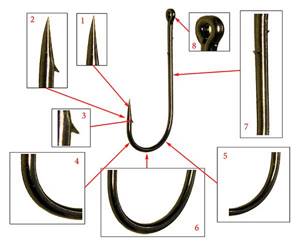
Now a little about the hook itself. It consists of:
| 1. points | 5. back of the head |
| 2. stings | 6. prying |
| 3. beards | 7. handguard |
| 4. forehead | 8. heads |
Each of these elements performs a specific function and its characteristics affect the operation of the hook as a whole. We have already talked about the edge.
The beard is not an entirely necessary part of the hook. Its purpose is to hold the bait and the caught fish. There are barbless hooks that are used either for quickly catching small fish in competitions, when speed is extremely important, or for catch-and-release fishing, so as not to injure the trophy. Such hooks are available from Kamasan, Gamakatsu and many other brands.
The shape of the forehead, back of the head and underhook determine which bait is preferable to use for a given hook, and also affect the quality of hooking and holding the caught fish. Here it would be appropriate to pay attention to the most characteristic forms. We will look at them using the example of the widely used Saikyo hooks.
Kirby (Idumezina Ring) is the most common bend. The moderate roundness of the forehead allows the use of delicate animal baits such as bloodworms and maggots. The hook holds the fish well and does not tear its lip too much.
Aberdeen (Chinu Ring) - the rounded shape of the hook is designed for the use of fragile baits such as peas, corn, pearl barley and others. This is actually the oldest form and is not used very often anymore.
Crystal (Crystal Ring) is a fairly popular form of hook bend. Thanks to the small radius of curvature of the forehead, a hooky hook is obtained that practically does not come off. True, at the same time it quite seriously injures the fish, and hooks of this type are prohibited in some foreign sports reservoirs.
Limerick (Clever Carp) is a fairly versatile model. Very common among carp and offset hooks.
In addition to these types, there are a lot of transitional models. Recently, offset hooks of angular shapes have become popular among spinning fishermen. The length of the forend, as well as the shape of the hook, characterizes the attachment used. For animal baits, an extended fore-end is more suitable. For plants, a short one with an appropriate hook shape is preferable. In some models of offset and carp hooks, the forend has the appearance of an arc.
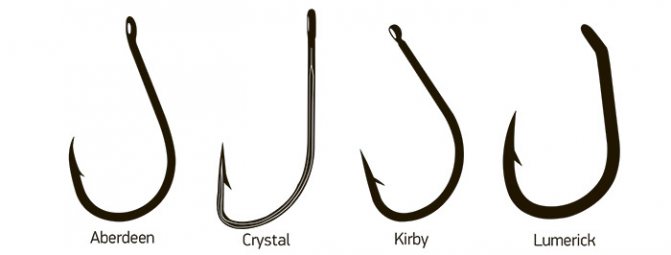
Hook head. It serves to attach it to the gear, but it is attached correctly and this is very important. The head may look like a blade or a ring. The spatula is used, as a rule, for knitting small hooks on fishing lines with a diameter of up to twelve hundredths of a millimeter. The junction of the fishing line with the hook should run along the inside of the bend. The same principle is used for the ring, but in this case the ring is a guide for the passage of the fishing line. It is in this position that the hook will ensure a good hook and reliable fishing. You should be extremely careful about the quality of processing of burrs both on the ring and on the blade. The sharp edges can easily cut even thick fishing line or braided cord. Saikyo, Gamakatsu, Kamasan, Owner do not allow themselves such liberties, which cannot be said about the manufacturers of cheap hooks. The thickness of the wire from which the hook is made also has a significant impact on fishing performance. The fact is that the thin, strong wire of the hook, also stamped (forged) along the bending plane, easily cuts through the soft tissues of the fish’s mouth. But with all this, an attempt to attach bloodworms, maggots or fragile peas to a thick wire can become a very serious test of the nervous system’s resistance to stress. Therefore, when choosing a hook for your tackle, think about what kind of attachment you will use. Sometimes it is much easier to change the leash than to suffer, smearing the poor worm on your fingers.
What are the hooks covered with?
Now a few words about the coatings that are used in “hook-making” production. The bulk of products are coated with thin layers of various weakly oxidizing metals using the galvanic method. Nickel, bronze, and brass are used for this. Much less common is chrome and gold. Red, green, blue models are coated with colored varnish. While such a hook is in its original packaging, it is perfectly protected from corrosion, but at the slightest mechanical load, the varnish coating flies off and the metal is left alone with an aggressive environment for it. To avoid this, hook manufacturers Saikyo and Kamasan use double-coated hooks in their color series. The first is galvanic, and the second is varnish.
In addition to the above-mentioned protective coatings, hooks coated with Teflon have recently begun to be used in carp fishing. In this case, the metal surface not only receives protection from oxidation, but also significantly reduces its coefficient of friction, which allows the hook to penetrate the fish tissue more easily. For carp fishing, where self-hooking plays the main role, this is most relevant. An example is the entire Carp Specialist series from Kamasan. If you think that the topic of hooks ends here, you are deeply mistaken. We have not covered fly fishing hooks or double and treble hooks. We touched very briefly on the topic of offset printers. Yes, and we mentioned various types of specialized carp, float and feeder hooks, one might say, in passing. And if we start to understand size classification systems... I suspect that we will return to this topic more than once.
Dmitry Ivanov
“Fishing with us”, May 2015
Photo classification of hooks
Note!
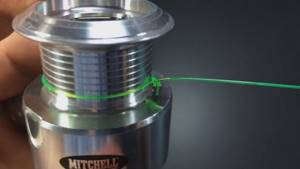
How to tie a fishing line to a reel - methods, tips on how to tie correctly and an overview of the most reliable knots (85 photos and videos)
Cuts for wobblers and spinners - how to make a simple homemade cut. 110 photos and videos of practical tips

How to tie a hook to a fishing line - advice from professionals and the best patterns for beginners (115 photos and videos)
Read here Crucian carp killer tackle: basic elements, methods of application and tips on how to make it yourself (125 photos and videos)
Help the project, share on social networks 

1+
Existing types of fishing hooks used
The first fishing gear was made using natural materials, which were widely used to obtain a good catch.
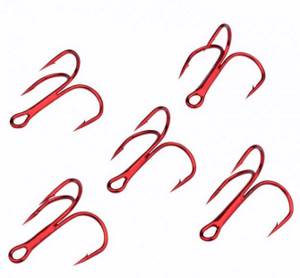
Increasing the efficiency of fishing depends entirely on the equipment used, so the simplest classification of hooks by numbers and other characteristics will help you make the right choice:
- number of hooks on the base;
- size and shape of the fishing hook;
- method of attaching fishing line to a hook.
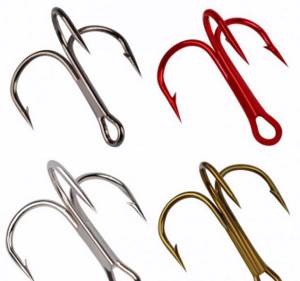
Additionally, fishing tackle of this type can vary in thickness and color, the bending noise of the main tip and other parameters.
All kinds of hooks can be used to catch different types of fish; they are used for predatory and peaceful fish, float and bottom fishing, and are suitable for long and short casts.
